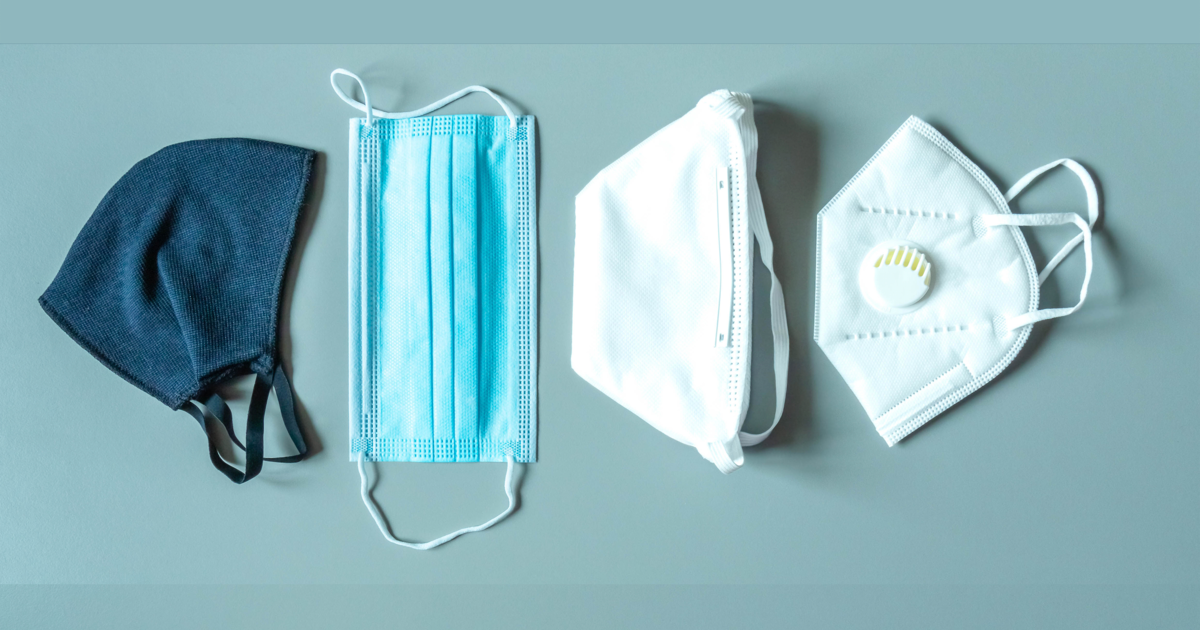Let customers speak for us
What customers think about the store
The store offers a wide selection of high-quality hair and beauty products. Customers appreciate the competitive prices, fast shipping, and excellent customer service. The store stands out for its efficiency in processing orders and delivering products promptl...
AI-generated from customer reviews.

Masks are designed to contain droplets and particles that you exhale, cough, or sneeze, providing some protection from particles spread by others, including the virus that causes COVID-19.
Respirators are intended to protect you by filtering the air and fitting closely to your face to filter out particles, including the virus that causes COVID-19. They also prevent you from spreading droplets and particles to others.
Main Types of Masks and Respirators
- N95 Respirators: Respirators offer high filtration efficiency and are designed to fit tightly on the face, providing a high level of protection against airborne particles.
- Surgical Masks: These are loose-fitting disposable masks that protect against large droplets, splashes, and sprays. They also help prevent the wearer from spreading respiratory droplets to others.
- Cloth Masks: These masks are typically made of multiple layers of fabric and can be reusable. They provide a basic level of protection by blocking respiratory droplets from the wearer and can also offer some filtration efficiency.
How to Use a Face Mask for Protection
Here are some general guidelines for using a face mask for protection:
- Wash your hands thoroughly before putting on a mask.
- Ensure the mask covers your nose and mouth completely, fitting snugly against the sides of your face without any gaps.
- Avoid touching the mask while wearing it. If you need to touch it, wash or sanitize your hands immediately afterward.
- Do not remove the mask to speak, cough, or sneeze. If you need to do any of these, cover your mouth and nose with a tissue or your elbow.
- Replace the mask with a new one if it becomes damp, soiled, or damaged.
- Remove the mask by the ear loops or ties, avoiding touching the front of the mask.
- After removing the mask, wash your hands thoroughly.
Choosing a Mask or Respirator for Different Situations
Different masks and respirators offer varying levels of protection. Loosely woven cloth masks provide the least protection, while well-fitting NIOSH-approved respirators (e.g., N95s) offer the highest level of protection. To ensure optimal protection, choose a mask or respirator that fits well over your nose, mouth, and chin. Avoid masks with gaps around the sides, exhalation valves, single-layer fabric, or those made of thin material. When choosing a respirator, ensure it fits well, forming a seal to your face. Avoid respirators with exhalation valves, vents, or other openings. NIOSH-approved respirators (e.g., N95, N99, N100, P95, P99, P100, R95, R99, R100) provide the highest level of protection when worn correctly.
When to Wear Masks and Respirators
Wearing masks and respirators is particularly important in certain situations, such as:
- Caring for someone with COVID-19.
- If you are at increased risk for severe illness due to underlying health conditions.
- Working in jobs where you interact with the public, especially when not everyone is consistently wearing a mask (e.g., bus drivers, grocery store workers).
- Traveling on crowded public transportation or in crowded settings.
- When physical distancing is not possible.
What are the Best Face Mask for Kids
Children ages 2 years and older should wear masks in indoor public spaces when COVID-19 hospital admission level is high. Ensure the mask fits properly, without impairing vision. Respirators designed for children are limited; consult a healthcare provider if your child has medical conditions. When choosing masks for children, it is important to consider their age, fit, and comfort. Some options for children include smaller-sized surgical masks or cloth masks specifically designed for kids. Ensure the mask fits properly, covers the nose and mouth completely, and does not pose a choking hazard. It is also important to teach children how to properly wear, remove, and care for their masks.
Which is the Warmest Safety Mask for the Winter
When choosing a warm safety mask for winter, consider the following:
- Material: Look for masks made of materials like polyester, nylon, wool, or other moisture-wicking fibers that can provide insulation and retain heat.
- Layers: Look for masks with multiple layers of fabric, as they provide better warmth and filtration.
- Fit: Ensure that the mask fits snugly over your nose, mouth, and chin without leaving any gaps. This helps trap heat and prevents cold air from entering.
- Breathability: While warmth is important, it's also crucial to choose a mask that allows for sufficient airflow to avoid discomfort and moisture buildup.
- Additional features: Some masks may have adjustable ear loops, nose wires, or even built-in neck gaiters or face warmers to provide extra protection from the cold.















